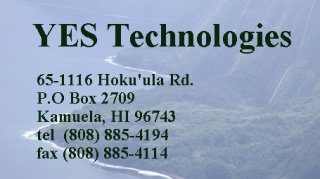
System for In Situ Rehabilitation of Pipelines
Description:
Continuous, ductile system to rehabilitate underground pipelines in situ by extruding a molten thermoplastic tube into an existing pipeline and then expanding and cooling the tube to form a liner.
How It Works:
A hollow tube of thermoplastic liner material is extruded into the interior of an existing installed pipeline. Because pipelines in need of rehabilitation have often lost their original circular cross- sectional shape and/or have joints that are misaligned, the extruded tube has a cross-sectional area and/or diameter less than that of the pipeline. Thus, the hot, relatively soft tube is initially smaller than the pipeline. After the tube is extruded, it is expanded so that its outer surface is configured to fit against the inner surface of the pipeline. Upon contact of the outer surface of the tube with the inner surface of the pipeline, cooling and hardening of the liner occurs.
Potential Competitive Advantages:
- In situ means lower cost: Most rehabilitation techniques for underground pipes require significant excavation to gain access to the buried pipelines-- a very costly proposition. In situ techniques do not require significant excavation and are thereby more cost effective.
- Easier transport and storage: Transport and storage of plastic pellets used in our process is less cumbersome and costly than transport and storage of socks or other pipelining materials.
- Shorter installation time: Large-diameter fold and form thermoplastic liners can suffer from relatively long installation times, poor dimensional control due either to difficulty in maintaining uniform heat application during installation or to poor predictability in dimensional changes upon cooling.
- Reduces settling and installation problems: Our thermoplastic design is more ductile and avoids settling problems found in the more brittle thermoset resin liners. In addition, since our system doesn't require premature curing, we eliminate problems which can occur en route to the installation site or during installation.
Examples of Applications and Markets:
Rehabilitation of relatively dry underground pipelines, such as those in sewer conduits, especially when shear failure and settling are concerns.
Status:
Phase II SBIR research completed. This technology is available for licensing or outright sale.
Patents:
- "Process and Apparatus for In Situ Pipeline Rehabilitation System," U.S. Patent No. 5,104,595, issued April 14, 1992.
- "In Situ Pipeline Rehabilitation System," U.S. Patent Application No. 08/345,996.
Literature Available:
- Phase I Final Report-- System for In Situ Rehabilitation of Pipelines (research sponsored by U.S. National Science Foundation), July 1990, pp. 38 plus appendices.
- Phase II Final Report-- System for In Situ Rehabilitation of Pipelines (research sponsored by U.S. National Science Foundation), pp. 49 plus appendices.
Home | Company Profile | Technologies | New | Ordering Literature | Personnel | Links |<Contact Us/CENTER>
© 1999-2002 YES Technologies
